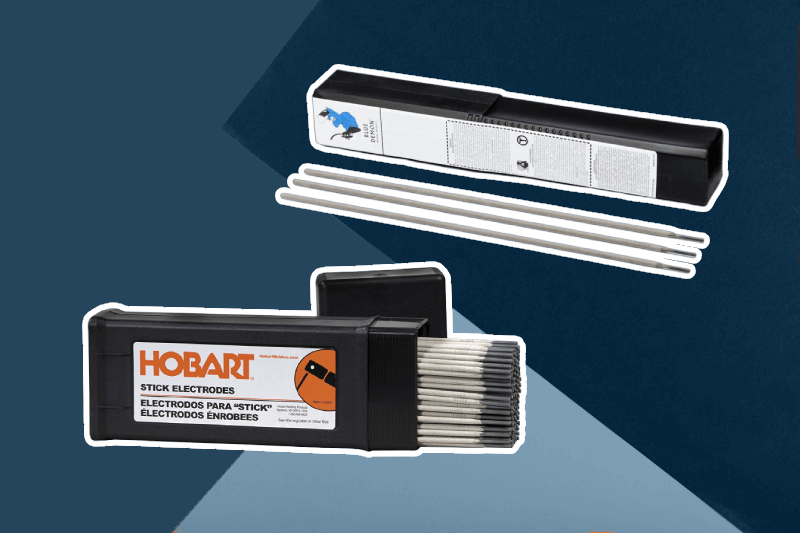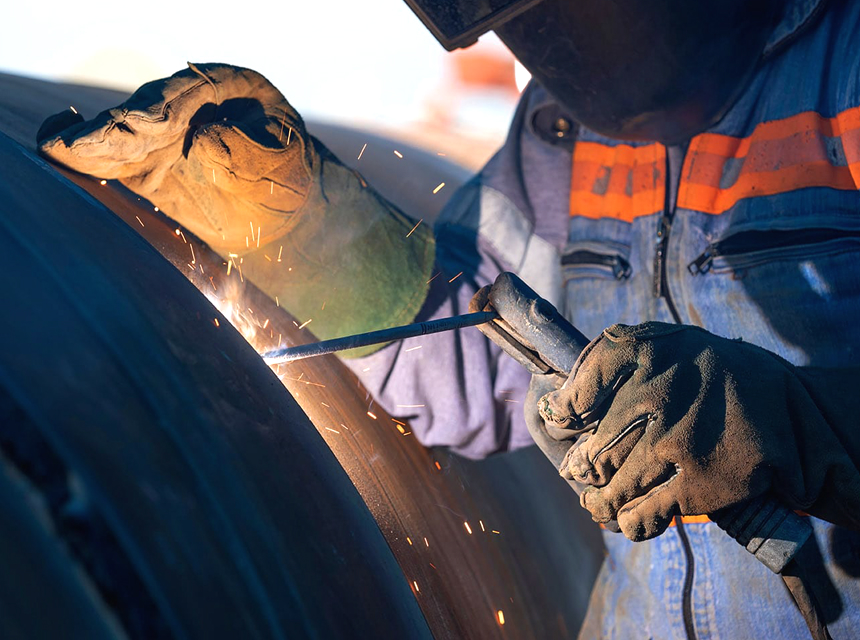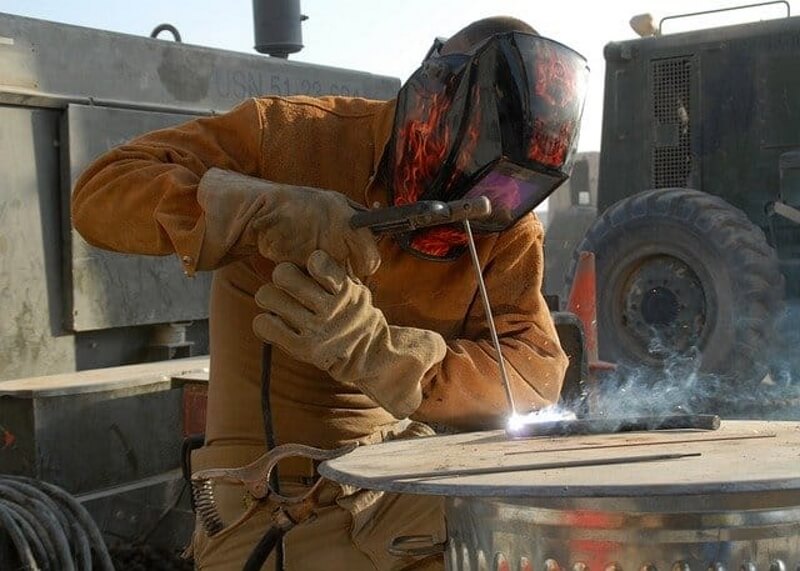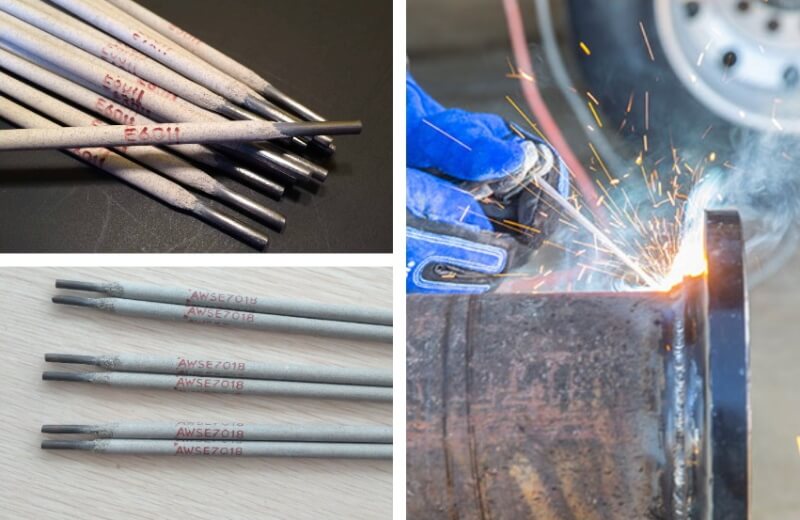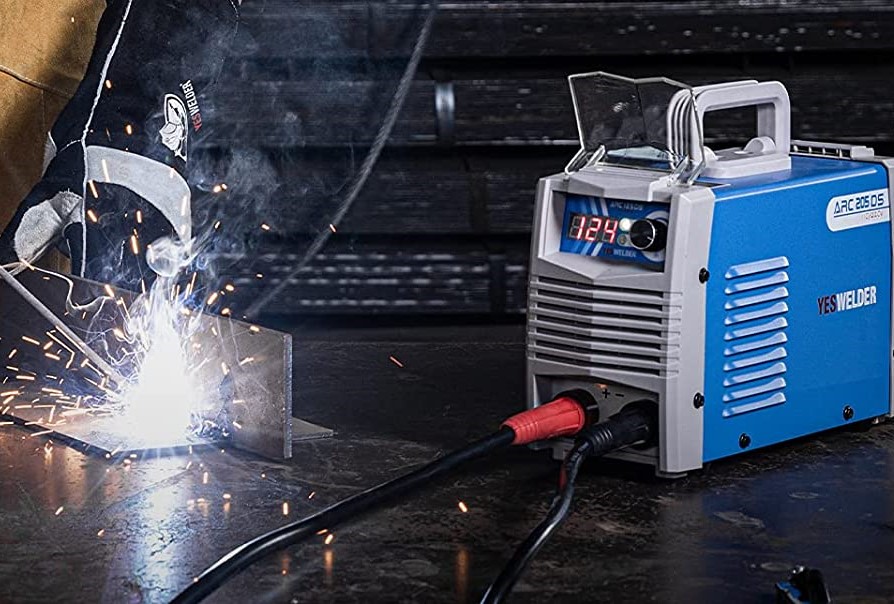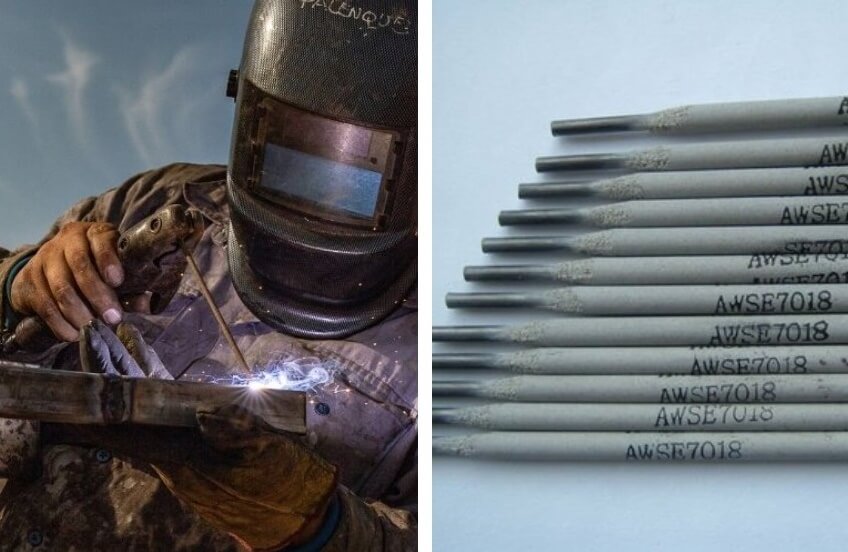

Something important to consider before starting to weld is the electrode that you will use. Whether you are going to be working domestically or for a small industry: on carbon steel, cast iron, stainless steel, or aluminum, there are different welding rods sizes and types for all applications.
That’s why when you go to the hardware store and ask to buy or order for electrodes, what they usually give you is the E6011, E6012, or E6013 of 3/32 or 2.5 mm and in some cases 1/8 or 3 mm. But what do all these numbers and letters mean? What is the right rod size for you and how do you pick the right welding electrode? In this guide, we’ll give you answers to each of your questions. Let’s get started!
A welding rod is an electrode or metal rod specially prepared to serve as a filler material in arc welding processes. They are manufactured in ferrous and non-ferrous metal.
The welding rod is used to carry electrical current through the workpiece and join two pieces. Depending on the process, the rod can be consumable, in the case of gas metal welding or shielded welding, or non-consumable.
In direct polarity, the material is positive and the electrode is negative, and in opposite polarities the electrode is positive and the material is negative.
During welding, the electric arc burns between the workpiece and the consumable electrode. The required filler material comes from the covering of the electrode. For welding, the stick electrode is clamped in the electrode holder and guided along the seam by the user. After the weld seam has cooled down, the slag can be removed.
Welding rods can be used on all steel materials, nickel and nickel alloys, copper and copper alloys, aluminum materials, and cast iron (limited).
There are two types of electrodes:
This has a metal core and chemical-based coating and an uncoated end for attachment to the electrode holder.
The core is the metallic part of the electrode that serves as a filler material in the welding process. Its composition varies depending on the material to be welded.
The coating is a material that is composed of different chemical substances and has the following functions in the welding process:
Bare electrode Trusted Source Bare Electrode | American Welding Society Education Online awo.aws.org is a filler metal welding rod that can only be used in processes where there is external protection to prevent the penetration of oxygen and nitrogen. These welding processes are called inert atmosphere, using inert gases such as argon, helium, or a mixture of argon and carbon dioxide.
This system is well known by the name of TIG welding. The most important characteristic of TIG welding is the high quality of welds on all types of metal. The weld beads are stronger, more resistant to corrosion, and more homogeneous than those made with a conventional electrode.
The electrodes used in the TIG system are made of tungsten or tungsten alloys. Their main characteristic is that their melting point ranges between 3400 and 4000 degrees Celsius. The diameters used are 1.6mm, 2.4mm, and 3.2mm.
The TIG welding system can be applied to almost any type of metal, such as stainless steel, aluminum, carbon steel, copper, nickel, etc. It’s widely used when you want to achieve good quality and finish.
There are various types of electrodes depending on the material you are welding:
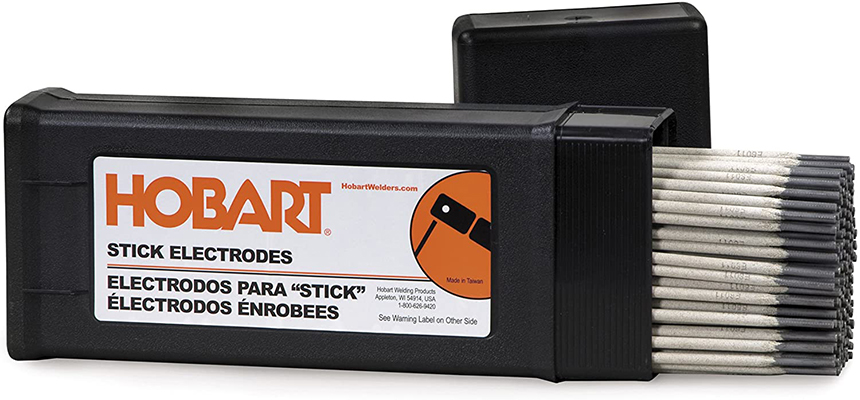
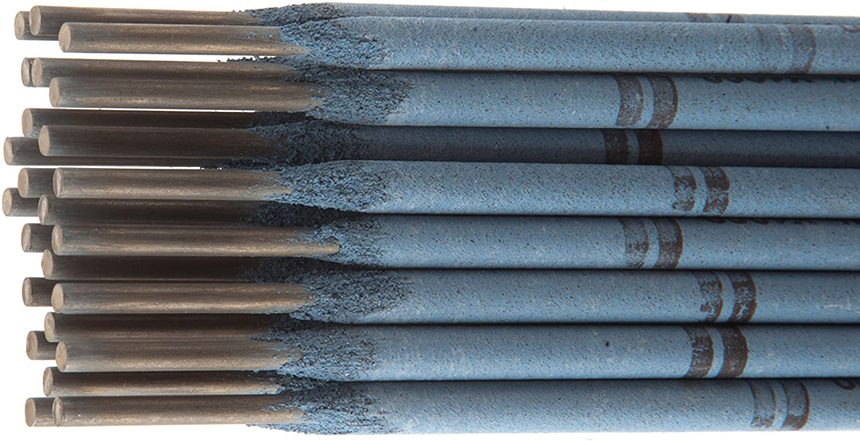
| The composition of the filler metal according to the metal to be welded | |
| Filler metal category | AWS standard |
| Carbon steel | AWS A5-2 |
| Copper and copper alloys | AWS A5-7 |
| Chrome-nickel and chrome-nickel alloys | AWS A5-9 |
| Aluminum and aluminum alloys | AWS A5-10 |
| Surfacing | AWS A5-13 |
| Nickel and nickel alloys | AWS A5-14 |
| Titanium and titanium alloys | AWSA |
| Magnesium alloys | AWS A5-19 |
| Zirconium and zirconium alloys | AWS A5-24 |
| Mild Steel Electrodes (GMAW) | BCS W48-4
AWS A5-18 |
If you have seen different types of electrodes, you know that most are identified by a code similar to something like: E 0000.
This is a code specified by the American Welding Society (AWS) Trusted Source Standard Welding Procedure Specifications (SWPS) : Resources : Standards : American Welding Society Standards – Standard Welding Procedure Specifications (SWPS) www.aws.org classification system, which identifies the different types of electrodes for easy identification by the user.
It should be noted that not all of them are exactly like this since different classifications are depending on the type of electrode, the most common of which we will explain below:
E usually indicates that it is an electrode designed for manual electric welding.
60 or 70 indicate the minimum tensile strength, without post-weld heat treatment, of the deposited metal.
The following alphabet (X in our example) indicates the position in which it can be successfully welded with the electrode. This can mean it is:
The following alphabet (X in our example) indicates the type of electric current and polarity in which the electrode works best, while also identifying the type of electrode coating. This digit is linked to the previous digit.
E indicates that it is an arc welding electrode.
308 indicates the AISI class of stainless steel for which the electrode is intended.
15 indicates the type of coating, the current class, and the polarity to be used.
It is very common to work with materials that have different thicknesses. And for a quality weld, the thickness of the material, as well as the diameter of the electrode, must be considered.
It is recommended to make use of thin materials with small diameter electrodes, and therefore with low current intensity.
The diameter of the rod is expressed in mm. Depending on the depth of the bead to be made:
| Rod diameter (mm) | Thickness of metal to be welded (mm) |
| 2 | 0.5 to 2 |
| 3 | 2 to 5 |
| 4 | 5 to 8 |
| 4 or 5 | 8 to 12 |
| 5 or 6 | 12 or + |
If you work with sheets between 1mm or 2mm thick, it is best to use 1.6mm diameter electrodes and adjust the intensity of the welding machine very well. So, choose a welder with good adjustable penetration. Likewise, it should always be welded in spots, allowing the material to cool down to avoid perforating the sheets.
As for thick-gauge steel, these support practically any electrode diameter from the thin to the thickest. However, for thick steel, it is advisable to weld with 2.5mm, 3.25mm, or 4mm diameter electrodes.
This is the question often asked by customers facing new tasks. Since we don’t have all the values in mind, there is a simple rule of thumb for the calculation. This results in a reliable guide value that applies regardless of the material used:
Material thickness x 0.5 + 1.0 mm = electrode/rod diameter
The formula can be used for welding electrodes for MMA welding as well as for welding rods in TIG applications. Unfortunately, it does not apply to MIG / MAG welding.
The following value is calculated for sheet metal with a thickness of 3 mm:
3 mm x 0.5 = 1.5 mm + 1.0 mm = 2.5 mm diameter of the filler metal.
In the case of odd values, the next possible size makes sense. For example, a result of 1.8 mm is rounded up to 2.0 mm.
Of course, deviations from this guide value are possible.
First of all, we want you to know that no hard and fast rule defines the perfect welding electrode size. Rather, it is a combination of the factors that will indicate which may be the most appropriate.
Each type of material, due to its chemical and mechanical characteristics, requires different electrodes. For mild steel (commonly called iron), practically any type of electrode is valid, they can be welded with rutile or basic electrodes.
In steel with slightly more special alloys with a higher percentage of carbon, usually have heat treatments that give them special mechanical characteristics due to their hardness and rigidity.
In these cases, it is advisable to weld at least with a basic or even stainless electrode.
There are also special electrodes for this type of material. Check with your supplier telling him what type of material you want to weld.
Stainless-steel materials can only be welded with stainless-steel electrodes, nothing else. Finally, know that for melt materials there are specific electrodes for this.
We imagine you have had different experiences with different thicknesses of iron. Here the best thing is to apply the law of thin materials of thickness, electrodes of small diameter, and therefore little intensity of current.
For thin base metal such as 1 mm or 2 mm, it is advisable to use 1.6 mm diameter electrodes and with the intensity of the welding machine well adjusted. And always spot weld, allowing time for the materials to cool so as not to pierce the sheets.
Thicker steel will support virtually any electrode diameter from thinner to thicker. But for thick steel, it is more advisable to weld with electrodes of a larger diameter (2.5, 3.25, or 4 mm).
The range of electrode welding machines is very wide. Each type of machine allows you to weld different types of electrodes. You must know what the limits of your machine are or the one you have planned to acquire to choose the correct electrodes depending on your machine.
All machines do not support all electrodes. In the case of inverter machines, they have their limitations of powers and types of electrodes.
Therefore, you have to know what the limitations are to make a good choice.
This is a major limitation on the electrode diameter. To a large extent, the diameter defines the power that the welding machine will consume.
When you work with a somewhat thicker electrode, the power requirements of the machine are greater. Therefore, it is easy for your electrical installation to trip due to excess consumption and overheating of the electrical network.
If you do not have more than 3000 watts, you should not go beyond 2.5 mm diameter electrodes. And as the power contracted with your electrical supply decreases, you should lower the diameter of the electrode (1.6 mm).
This defines practically two types of electrodes widely used to weld steel. When the weld joints are not going to withstand great efforts, rutile welding electrodes (6013) will suffice. These are widely used in blacksmithing jobs such as the construction of doors, bars, stairs, etc.
This type of material is not subjected to tensile, compression, torsion, weights, etc. Rutile electrodes provide a softer, more flexible weld.
On the other hand, the basic electrodes (7018) are designed for welding of higher quality and with higher demands in terms of efforts.
These electrodes provide higher quality mechanical characteristics to weld joints.
Your welding skills are also an important factor in defining the type of electrode you should choose, consider it. Not all electrodes are worked in the same way, each one of them has its technical requirements. For those who have just started electrode welding, it is best to weld with rutile electrodes.
These prime and start easier, which is essential for beginners. As you master the techniques, you may later opt for the basic electrodes, the difficulty of these electrodes is priming and starting with them, but once learned it is easier to weld with them.
Additional Tips
In welding, selecting the welding rods sizes is one of the keys to a successful result! And since there is a great variety of models and types of electrodes, a series of aspects must be considered when selecting it.
If you work with metal sheets that are 1mm or 2mm thick, it is best to use 1.6mm diameter electrodes. However, for thick steel, it is advisable to weld with 2.5mm, 3.25mm, or 4mm diameter electrodes.
It is of great importance to consider the detailed parameters to select the suitable welding electrode. By ensuring these, your welding job will be easier and neater, even as a starter.
